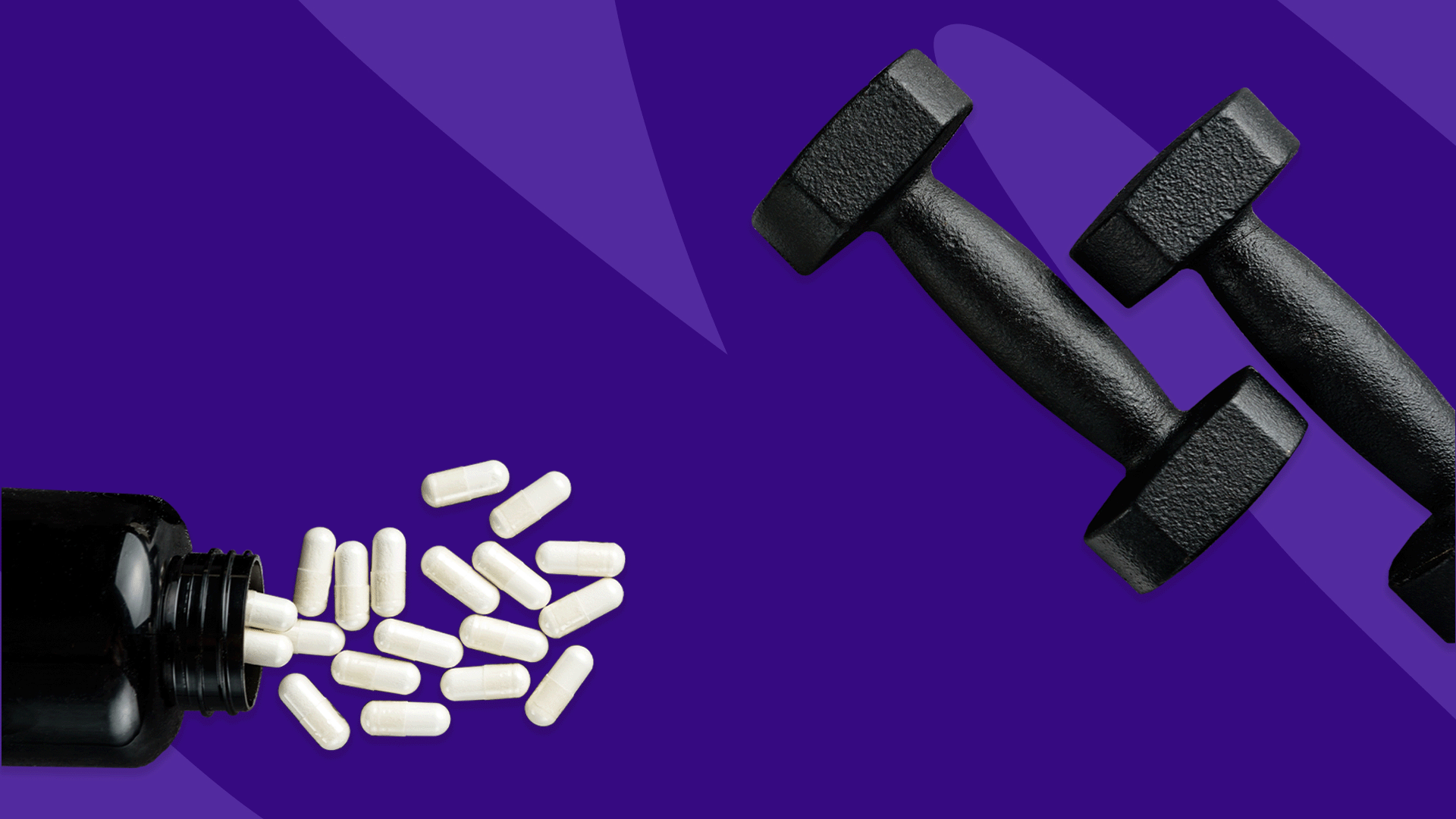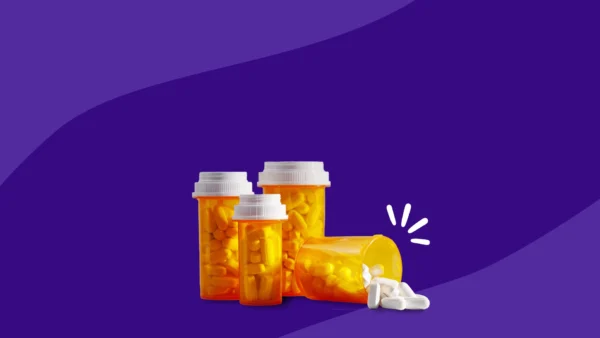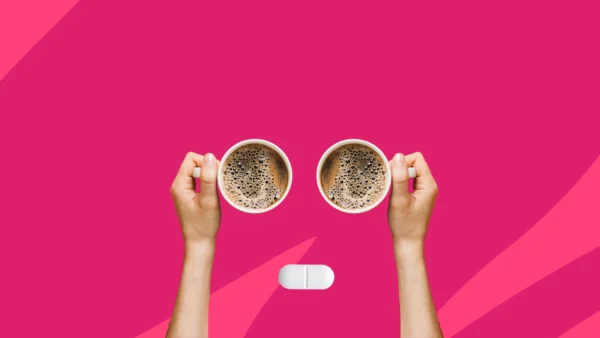You’re still sore from your last workout, so you pop an ibuprofen to power through today’s routine. Or maybe you’re training for a marathon, but your knee keeps acting up—instead of throwing in the towel, you’ve been relying on NSAIDs to get you through your grueling training runs. But will taking anti-inflammatories—or other medications—before or after your workout affect those sought-after gains?
4 drugs that affect muscle growth
Here’s what you need to know about the substances that might affect muscle growth and physical performance, plus whether they’re safe to take pre- and post-workout.
1. Advil (ibuprofen) and other NSAIDs
Whether the goal is pain prevention, enhanced performance, or to push through an injury, athletes take nonsteroidal anti-inflammatory drugs (NSAIDs), like Advil, more than any other medication. But according to Robert Glatter, MD, an emergency medicine physician at Lenox Hill Hospital in New York, multiple studies have found minimal, if any, improvements in performance among those taking ibuprofen. What’s more, taking Advil before a workout could potentially mask or hide pain, potentially increasing your risk of injury, Dr. Glatter says.
A recent study found that NSAIDs can delay the resolution of inflammation, potentially leading to chronic pain. That’s because the body’s acute inflammatory response (via neutrophil activation) protects us against its development, Dr. Glatter explains. Neutrophils, a specific type of leukocyte (white blood cells), are sent to areas of inflammation or infection to set the stage for macrophages, another type of specialized white blood cells, to repair muscle damage. But according to the study, NSAIDs like ibuprofen may blunt this reparative response, both at the cellular level and genetically, Dr. Glatter says, ultimately contributing to chronic pain.
Does ibuprofen affect muscle growth?
Ibuprofen and other NSAIDs are commonly used to address pain and soreness from exercise, says Brijesh Chandwani, DMD, BDS, an orofacial pain specialist at Connecticut and NY TMJ. They do this by inhibiting cyclooxygenase (COX) activity, a major enzyme involved in several physiological functions including inflammation and pain. “COX is required by muscles to develop mass (hypertrophy/strength), which is an adaptive response to exercise,” Dr. Chandwani says. “If COX is blocked using NSAIDs, theoretically the muscle growth is blocked.”
Research indicates that NSAIDs have the potential to impede muscle growth, specifically in otherwise healthy young individuals engaged in resistance training when taken at high doses for an extended period of time, says J. Wes Ulm, MD, Ph.D., a physician-researcher and bioinformatics expert at Harvard Medical School Hospital System.
For example, if you’re a bodybuilder, each exercise you do essentially injures the muscle, albeit in a controlled way, to promote growth. And inflammation is an important part of this process, says Dr. Ulm. “Through a series of steps involving growth factors, other regulatory molecules, and cellular signaling pathways, satellite cells surrounding the damaged muscle divide and fuse with the muscle fibers already present, leading to muscle hypertrophy and visible growth of the muscles,” Dr. Ulm says. Preventing the body’s inflammatory process with NSAIDs may inhibit muscle growth.
Ibuprofen after exercise
The research is not fully clear on the dosage, timing, or full impact in general of NSAIDs surrounding strength-building and resistance training workouts. “However, as a rule, blood plasma levels are highest shortly after ingesting an ibuprofen pill (or a dose of any other NSAID),” Dr. Ulm says. Therefore, to the extent that the research thus far suggests some potential for impeded muscle growth and repair post-workout from ibuprofen in young people, it may be optimal to avoid taking an Advil shortly before or after a workout.
In general, it’s advisable to avoid NSAIDs including ibuprofen, naproxen, and aspirin in high doses, Dr. Glatter agrees. “There is not only no measurable benefit,” he says, “but the risk of kidney injury (including hyponatremia) in light of more intense activity is also a potential concern.” Other risks of NSAIDs include intestinal bleeding, stomach upset, and cardiovascular issues.
2. Statins
Statins are drugs used to reduce high levels of bad cholesterol (LDLs or low-density lipoproteins) in the blood. “Statins impede the activity of a key liver enzyme involved in cholesterol production and packaging—but they, too, may also be associated with diminished muscle gains,” Dr. Ulm says.
It’s long been known that statins can cause side effects including myalgias (muscle pain), cramping, and weakness, especially at high doses. In severe cases, statins may cause rhabdomyolysis, a breakdown of muscle tissue that can cause kidney damage. And according to research, they can decrease workout performance.
RELATED: The causes of rhabdo – and how to recover
3. Alcohol
Alcohol has been shown to reduce physical performance and muscle recovery, Dr. Chandwani says. According to research, alcohol impairs protein synthesis, the body’s process of building muscle, particularly among those who drink heavily. So if your goal is to gain muscle mass, it’s best to keep your alcohol consumption to a minimum.
RELATED: Effects of post-workout drinking
4. Metformin
It’s possible that the diabetes drug metformin may impair your ability to gain muscle mass. According to a small study conducted in 2019, healthy adults over the age of 65 who were taking metformin experienced blunted gains in lean mass after following an exercise regimen that produced measurable increases in muscle mass in those not taking the drug. While more research is needed, it’s a good idea to consult with your healthcare provider if you’re on metformin and looking to put on muscle.
How to reach your optimal health
Staying well hydrated, eating a balanced and healthy diet, and getting adequate amounts of sleep can help you to live a full and healthy life while taking statins or NSAIDS, Dr. Glatter advises. “Moderate amounts of aerobic exercise along with engaging in strength training and conditioning are generally considered to be safe while taking such medications in lower to moderate dosages.” he says.
And Dr. Glatter emphasizes that adequate warm-up and stretching, proper nutrition, and adequate hydration play a more important role in reducing your potential for muscle injury and soreness than taking any anti-inflammatory medications.
Still, it’s important to have a discussion with your healthcare provider if you experience muscle aches, pain, or any perceived decrease in muscle strength or reduced endurance while taking statins and NSAIDS, Dr. Glatter recommends. “The remote risk of myopathy and rhabdomyolysis leading to kidney failure and more serious effects should be considered in those patients with persistent or worsening muscle pain or tenderness while taking statins,” he says.
READ NEXT: Creatinine levels











